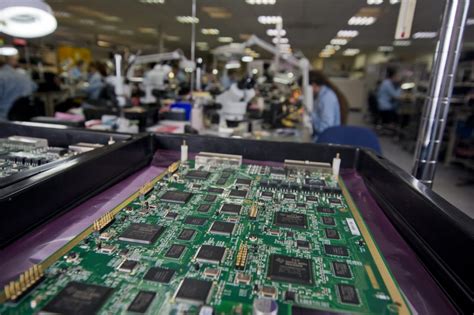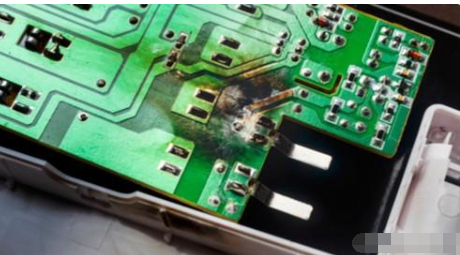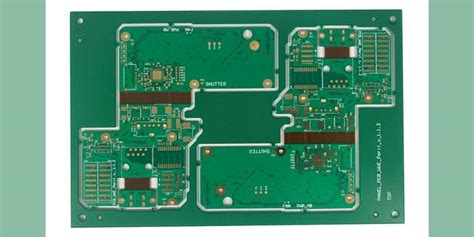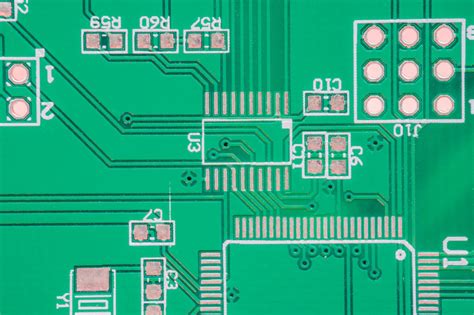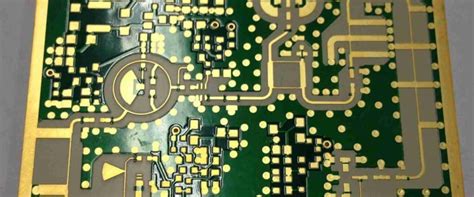Revolutionizing Electronics: The Future of Custom PCB Production
Key Takeaways
In today’s rapidly evolving electronics landscape, understanding the dynamics of custom PCB production is crucial for anyone involved in the industry. Custom PCB manufacturing is not just about the end-product, but also hinges on the effectiveness of pcb manufacturing companies that invest in innovative technologies and efficient processes. You will find that advancements such as advanced materials and integrated design software significantly affect pcb manufacturing cost, allowing for more streamlined operations and reduced waste. Moreover, by embracing automation, these companies can enhance production speed and accuracy, leading to a more competitive pcb manufacturing business environment. As you explore these trends, you’ll realize that staying updated on these changes is essential for optimizing your own projects and achieving superior performance in your electronics designs. In summary, understanding these elements will empower you to make more informed decisions regarding your PCB needs and strategies in this dynamic market.
The Evolution of Custom PCB Production: A Historical Overview
The landscape of custom PCB production has undergone significant transformations over the decades. Initially, PCB manufacturing relied heavily on manual processes, leading to longer production times and higher error rates. As the demand for more complex electronic devices surged, pcb manufacturing companies began adopting more systematic approaches. The introduction of basic automated systems started a revolution, allowing for increased accuracy and efficiency.
In the late 20th century, advancements in technology ushered in the era of semi-automated PCB manufacturing, reducing pcb manufacturing costs and enabling faster turnaround times. This period saw the emergence of sophisticated design software that facilitated intricate layouts, making it easier for designers to innovate without sacrificing functionality.
Fast forward to today, where the digital revolution has introduced fully automated systems and sophisticated manufacturing techniques. Now more than ever, your choices in pcb manufacturing business methods can significantly influence device performance and overall production efficiency. Many manufacturers leverage advanced materials and techniques such as multilayer boards and flexible circuitry that open new avenues for innovation.
| Historical Milestones | Description |
|---|---|
| Manual Production | Lengthy processes with high error rates |
| Semi-Automated Systems | Introduction of basic automation |
| Advanced Design Software | Enabled complex layouts, reducing costs |
| Fully Automated Systems | Increased efficiency and improved quality control |
This historical overview illustrates not only how far we’ve come but also sets the stage for future advancements in custom PCB production, paving the way for even more innovative solutions in electronic design and functionality.
Innovative Technologies Driving PCB Manufacturing Forward
In the dynamic field of pcb manufacturing, you are witnessing a wave of innovative technologies that are propelling the industry into a new era. Cutting-edge techniques such as additive manufacturing and advanced materials are revolutionizing how pcb manufacturing companies approach the design and production of circuit boards. By utilizing methods like 3D printing, these companies are significantly lowering pcb manufacturing costs while also allowing for more complex and efficient designs. Furthermore, developments in robotics and AI-driven automation have streamlined the production process, enhancing precision and reducing lead times.
“Embracing new technologies is not just an option anymore; it’s a necessity for maintaining competitiveness in the pcb manufacturing business.”
As you explore these advancements, you will discover how they improve not just efficiency but also sustainability practices within the industry. This movement towards innovation reflects a broader trend of responsiveness to market demands, ensuring that products not only meet current technological standards but also foresee future needs in electronics. Understanding these critical updates will empower you to make informed decisions regarding your projects or investments in custom PCB production.
Design Trends Transforming the Look and Function of PCBs
The landscape of PCB manufacturing is constantly evolving, driven by innovative design trends that not only enhance the aesthetic appeal but also optimize functionality. Modern consumers demand more compact and efficient devices, prompting PCB manufacturing companies to rethink their design approach. Sleeker, more intricate layouts are emerging that maximize space without compromising performance. This shift towards miniaturization is complemented by advanced materials that improve thermal management and signal integrity, critical factors in today’s high-performance electronics. Additionally, the rise of flexible PCBs offers unprecedented versatility in product design, enabling devices to be more adaptable to varied applications. As you explore these trends, consider how they influence the overall PCB manufacturing cost—the integration of advanced technologies can initially impact costs but often leads to better efficiency and lower long-term expenses in the PCB manufacturing business landscape. These combined advancements not only improve device functionality but also cater to an aesthetic sensibility, making PCBs an integral part of modern electronics.
The Role of Automation in Modern PCB Production Processes
In today’s rapidly evolving landscape of custom PCB production, automation plays a vital role in shaping the efficiency and accuracy of PCB manufacturing. By integrating advanced technologies such as robotic process automation and machine learning, PCB manufacturing companies are significantly reducing production time while enhancing the precision of complex designs. This shift not only leads to a decrease in pcb manufacturing cost but also elevates the overall quality and reliability of the products. As you delve deeper into this technological transformation, you’ll discover that automated systems streamline various stages of production—from design to assembly—enabling businesses to respond swiftly to market demands.
With automated inspection systems, for example, defects that might go unnoticed in traditional setups are caught early in the process, promoting higher standards in product integrity. Additionally, automation allows for greater customization at scale, transforming how you perceive and engage with pcb manufacturing businesses. As you consider the implications for your own projects, embracing these automated solutions can pave the way for innovative designs and improved performance in your electronics. Ultimately, investing in automation not only keeps you competitive but also ensures that your products meet the increasing expectations for functionality and durability. By understanding the pivotal role of automation, you can better navigate the complex landscape of PCB production and position yourself for future success.
Sustainability in Custom PCB Manufacturing: A Greener Approach
In today’s rapidly evolving electronics landscape, the push for sustainability in custom PCB manufacturing is gaining significant momentum. As you explore the practices of leading PCB manufacturing companies, you’ll find that a commitment to environmentally friendly methods is becoming a cornerstone of business strategies. This shift often involves utilizing eco-conscious materials, which not only help reduce waste but also contribute to a lower overall PCB manufacturing cost. Moreover, companies are increasingly adopting innovative processes like advanced recycling techniques and energy-efficient manufacturing practices, aiming to minimize their carbon footprint. As you consider entering the PCB manufacturing business, understanding these sustainable approaches can provide a competitive edge while appealing to eco-aware consumers. Emphasizing these green practices can lead to enhanced product appeal and support long-term growth in a striving industry. Whether you’re assessing existing suppliers or aiming to develop your own products, prioritizing sustainability can ensure that your operations align with contemporary values and regulations affecting the global market.
Challenges and Solutions in the PCB Production Landscape
In the fast-evolving realm of custom PCB production, you may encounter several challenges that can impact efficiency and pcb manufacturing cost. One of the primary issues faced by pcb manufacturing companies is the complexity of designs that demand higher precision. As electronic devices become increasingly compact and feature-rich, design intricacies can lead to higher failure rates during manufacturing. Solutions such as advanced simulation tools and improved design verification processes are vital in addressing these issues. Furthermore, collaboration across departments can enhance communication and preemptively solve potential problems.
Another significant challenge relates to supply chain disruptions which can slow down the pace of pcb manufacturing business operations. When raw materials are limited or costs fluctuate unpredictably, manufacturers must adopt flexible sourcing strategies, including establishing partnerships with multiple suppliers. This approach not only mitigates risks but also potentially lowers pcb manufacturing costs.
Lastly, you should consider workforce training as a critical factor in navigating these challenges effectively. A skilled workforce capable of utilizing cutting-edge technologies in pcb manufacturing ensures that your production lines operate smoothly and efficiently. Implementing continuous education programs can significantly enhance skill levels while fostering innovation within your team. By recognizing these challenges and integrating effective solutions, you position your custom PCB production endeavors for greater success in a competitive market landscape.
Case Studies: Success Stories in Custom PCB Applications
In recent years, the landscape of custom PCB production has witnessed remarkable shifts, particularly demonstrated through various case studies showcasing the prowess of pcb manufacturing. One compelling example involves a tech startup that sought to revolutionize wearable technology. By collaborating with leading pcb manufacturing companies, they achieved a highly compact design that integrated state-of-the-art sensors. The result was not only a sleek device but one that significantly reduced the overall pcb manufacturing cost. This case highlights how strategic partnerships in the pcb manufacturing business can lead to groundbreaking advancements and superior device functionality.
Another notable success story comes from the automotive sector, where a manufacturer transformed their approach to custom PCB production by implementing advanced design trends that enhance performance and reliability. By leveraging innovative technologies along with automation in the design and assembly stages, they managed to streamline their processes, demonstrating how efficiency can be increased without compromising on quality.
Together, these case studies illustrate how adapting to the ever-evolving standards of custom PCB applications not only enhances device performance but also paves the way for future innovations across multiple industries. For more information on these transformative practices in both local and global contexts, check out Andwin Technology.
The Future of Electronics: What Lies Ahead for Custom PCBs
As you look towards the future of custom PCB production, several trends and advancements are poised to reshape your approach to pcb manufacturing. With the increasing complexity of electronic devices, the demand for high-performance PCBs has never been greater. You’ll notice that pcb manufacturing companies are adopting cutting-edge technologies like additive manufacturing and advanced materials, enhancing both the efficiency and efficacy of production processes. This evolution directly impacts pcb manufacturing cost, as innovations streamline operations and reduce waste, allowing you to create more intricate designs at a competitive price point.
Moreover, as automation takes center stage in modern pcb manufacturing business, you can expect faster turnaround times and increased precision in production. This means that even smaller businesses can compete on a larger scale by leveraging automated systems that minimize human error while maximizing output quality. Sustainability is also becoming a prominent theme in the industry; many companies are prioritizing eco-friendly practices to not only meet regulatory requirements but also appeal to eco-conscious consumers.
What lies ahead for you in the realm of custom PCBs is an exciting blend of innovation, sustainability, and cost-effectiveness. Embracing these advancements will prepare you to meet the evolving demands in electronics, ensuring your products remain at the forefront of technology.
Conclusion
As you reflect on the advancements in custom PCB production, it becomes clear that the landscape is shifting rapidly. The interplay of innovative technologies and design trends is setting new standards for pcb manufacturing, enhancing both functionality and aesthetics. Understanding the role of automation and sustainable practices not only contributes to efficiency but also addresses environmental concerns associated with the pcb manufacturing cost. As you engage with various pcb manufacturing companies, consider how these innovations can elevate your own projects and reduce costs. Moreover, recognizing the challenges in the current pcb manufacturing business can help you strategize effectively for future endeavors. The synergy of these elements will undoubtedly continue to shape your experience in this evolving industry, paving the way for a more connected and efficient electronic future.
FAQs
What are the key factors affecting pcb manufacturing costs?
The pcb manufacturing cost can be influenced by a range of factors, including the complexity of the design, material choices, volume of production, and the specific pcb manufacturing companies you choose. For instance, advanced features like multi-layer designs or specialized coatings may increase expenses.
How do I choose a reliable pcb manufacturing business?
When selecting a pcb manufacturing business, consider their experience in the field, customer reviews, and case studies showcasing past projects. It’s also beneficial to evaluate their communication practices and support services.
What innovative technologies are impacting pcb manufacturing?
Recent advancements like automation, 3D printing, and IoT integration are revolutionizing pcb manufacturing, enhancing efficiency and precision in the production process. These technologies not only improve output quality but can also significantly lower costs over time.
How can I optimize my design for cost-effective production?
To optimize your design for a more economical run with pcb manufacturing companies, simplify complex patterns and minimize layers when possible. Utilizing standard materials and components can also reduce costs significantly while maintaining performance.

